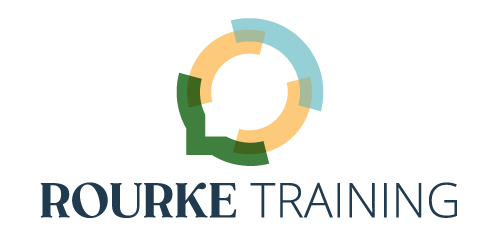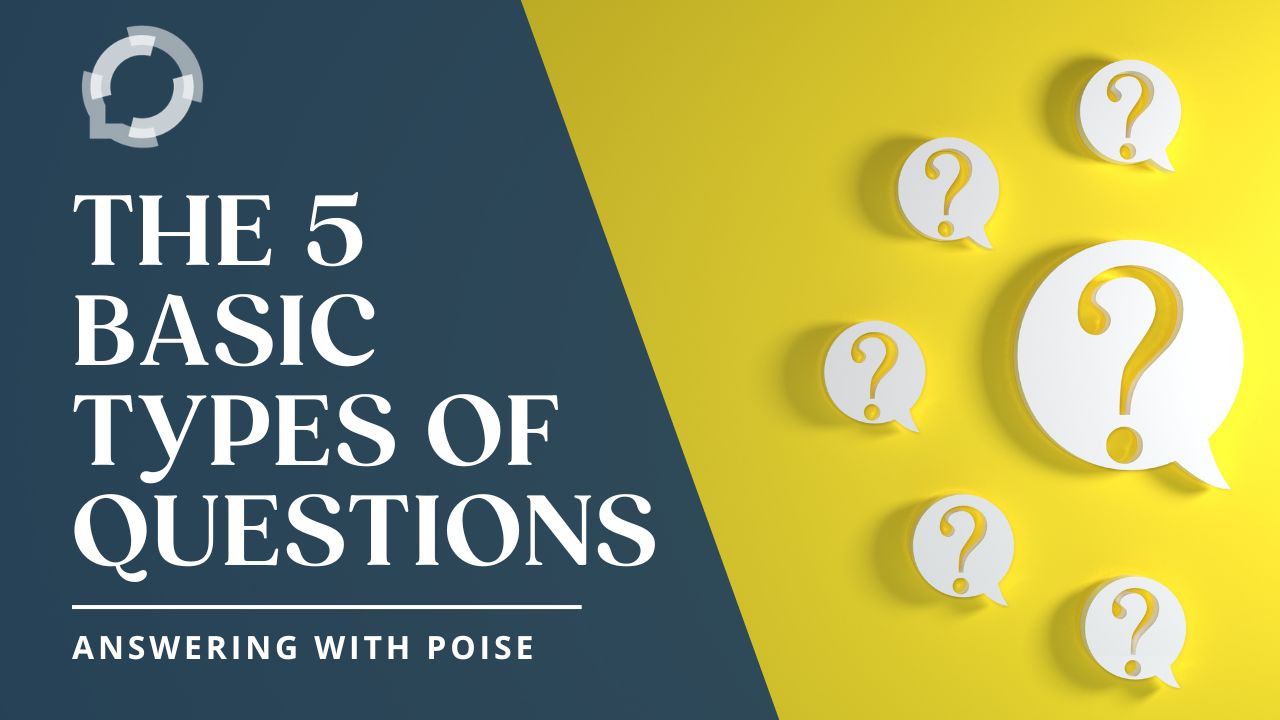“Can I ask you a question?”
Whether you’re a fan of Taylor Swift’s 2022 song, David Tennant and Catherine Tate’s skit for Comic Relief in 2007, or the TV quiz show Jeopardy, questions are key for understanding. They’re also notoriously tricky because they put the speaker on the spot.
The Q&A session is a staple in many types of public speaking. For speakers and trainers, questions can signal that your audience is engaging with your material, eager to learn more, thinking creatively about the content. Unfortunately, questions can also signal disengagement or even outright hostility. When you’re the one in the front of the room, you need to be prepared to answer anything your audience can throw at you, and do it in a way that keeps your presentation on track, not derailed.
Because Kirsten’s been a tech trainer for over 20 years, she’s heard it all, from the questions a speaker hopes to get to ones that leave a speaker still scratching their head days later. She’s distilled her experience into the 5 types of questions that every speaker and trainer gets. She also knows when to answer a question and how to defer it if necessary.
How many of these are you prepared to answer the next time you’re asked? Do you know when to answer them? Most importantly, have you practiced?
1. Relevant and Timely Questions
These are on-point questions asked at the right moment in your presentation. Every speaker looks forward to these because they’re ideal. They might be perfect in terms of content, moving the presentation to a deeper level or connecting different points, or they might be an instance of perfect timing, bringing up a point that you were about to make anyway.
When you get ideal questions, answer them as they occur throughout your presentation. Repeating the question as close to word-for-word as possible is a good practice for making sure that everyone heard it and checking that it’s what the person intended to ask.
2. Relevant but Not Timely Questions
This is the group of questions that are on-point, though you need to answer them later. They’re terrific and show that the audience is engaged and even leaping ahead in their understanding of your material. They’ll move to the first category as soon as you come to the related section of your presentation.
Write these questions on sticky notes to put them in a short term parking lot. Show the audience that you’ve done it and put the note where you can easily see it while you’re talking. At the right moment, show the note and answer the question. If you can, gesture to the person who’d first asked the question to reinforce that you’re returning to their concern.
3. Off-Topic Questions
These are beyond the scope of your presentation or are unrelated to your material. Don’t try to answer them. They take time away from questions from the first two categories, at the very least; at worst, they risk sending your conversation so far from your point that it’s hard to return the audience’s attention to your topic.
Redirect off-topic questions to a more appropriate source. You might offer to speak with the person after your presentation to share the new source or you might get in touch afterwards to follow up. However you choose to redirect the question, use “yes, and” rather than “yes, but” to acknowledge the question and return to your topic. For example, you might say, “Thanks for sharing your observation about why Americans call the sport ‘soccer’ instead of ‘football,’ and now let’s get back to analyzing Super Bowl advertising trends.”
4. Known Unknown Questions
Sometimes, you just don’t know the answer to a question, even if you feel that you should. The reason why you don’t know isn’t as important as how you handle the moment.
Commit to finding out the answer and reporting back. This is where you use sticky notes again, to write yourself a reminder. At the same time, tell your audience how you’ll be following up – looking up the answer during a break and sharing the information before the next part of the presentation starts, email the answer to all attendees, sending the information to a specific contact person for internal distribution, posting it on social media, etc. And then do it.
5. Unknown Unknown Questions – The True Curve Ball
These are questions that you can’t predict, often because they’re more about the person asking than about you or your material. Unlike off-topic questions, which might have only a tenuous link to your content but generally come from the asker’s positive interest, true curve balls might be aggressive or an attempt to undermine your expertise. The key to this category is owning your room, responding in a way that keeps your Q&A focused without alienating the audience.
In fact, asserting your authority and politely establishing dominance is not only effective when answering true curve balls, it’s crucial. Owning your room shows respect to your attendees so that they get the experience they were promised, rather than letting one person’s agenda overtake the presentation. While it might be tempting to go toe-to-toe with someone who’s being hostile, you owe it to everyone else to stay focused on what you came to say. To be clear, this isn’t about shutting down genuine and respectful disagreement about the material. This is about not letting one person ruin the experience for everyone else.
Practice speaking in a calm and assertive voice, using phrases like, “That’s far outside the scope of today’s presentation,” “That’s not related to this material,” and “We’re not going there.” Always be polite. If the questioner sees that you’re angry, they’ve scored a point and likely will continue to derail your presentation. Keep in mind, though, that being polite isn’t the same as being “nice.” Being assertive isn’t the same as being rude; you can be pointed and polite at the same time.
If you are speaking or presenting online, make sure you know how to kick people out of your virtual room if necessary. Rather than trying to carry on while ejecting someone for being disruptive, tell the audience that you’re going to pause for a moment. Then do what you need to in order to remove the person from the online platform and tell everyone what you’ve done before resuming.
If you’re in person with your audience, be willing to tell someone to leave the room. Pause your presentation until they do. Handling confrontation can be difficult for some speakers, so always know who your back-up is – the event liaison? An executive officer in the organization?
How About You?
How do you prepare for questions? Are these categories familiar? Do you have other kinds of questions that you usually get? What’s the most off-the-wall question you’ve received and how did you handle it?
Have you ever had to reply to a true curve ball question without alienating your audience? What did you do? How did your audience respond afterwards?
Tell us about it in the comments.
Check Out Our YouTube Channel
The Rourke Training – Ongoing Mastery YouTube channel has a bit of something for everyone. Go there to get Kirsten’s take on examples of public speaking, as well as reflections on her entrepreneurial journey. The channel is also the home of the podcast Kirsten and Kellie produced for 5 years, Ongoing Mastery: Presenting & Speaking, which covers everything connected to continually improving your craft of being a public speaker, from interviews and mini-coaching sessions with guests to conversations between Kirsten and Kellie.
Come join us. Cheers, Kellie


